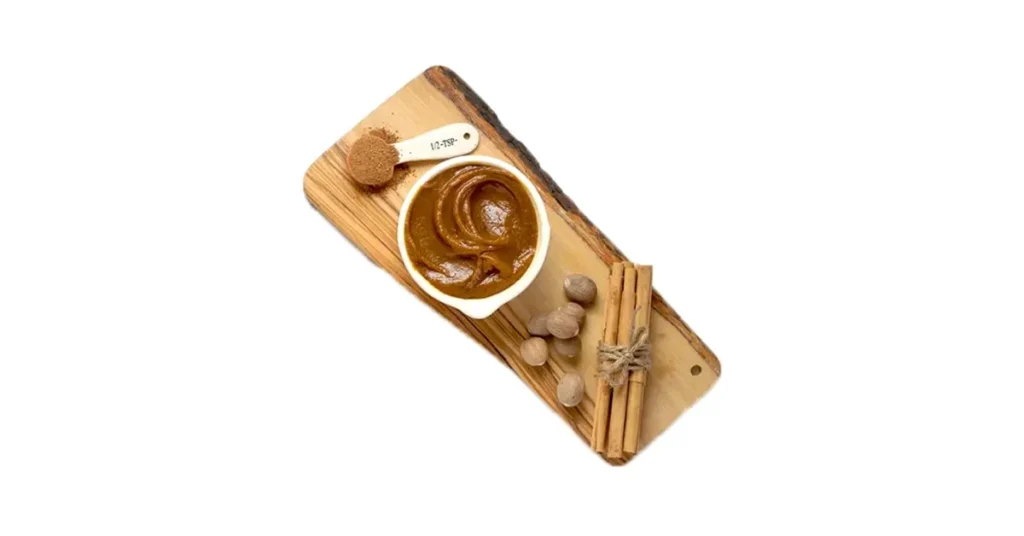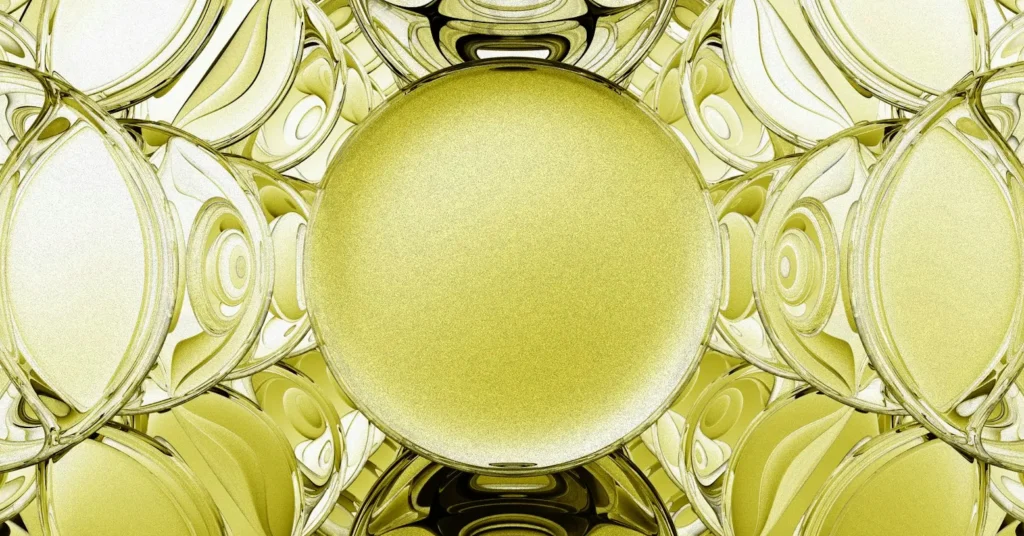The sweet treat caramel is famed for its luxurious flavor and creamy consistency. Its nutritional value and health effects depend largely on different types of fat present in caramel. Your decision-making power regarding dietary decisions depends on your understanding of the different fats found in caramel.

Table of Contents
ToggleUnderstanding the Fat Composition in Caramel
What Are Fats and Their Role in Caramel?
The essential macronutrient fat supplies energy while simultaneously delivering aromatic characteristics to food products. The creamy texture along with the mouthfeel of caramel stems from its fat content. The percentage of different types of fat present in caramel depends on how the creators utilize their buttercream and milk ingredients.
The style of fat in caramel contributes to changes in both its texture formation along stability attributes and flavor profile. Fat type selection affects the texture of caramel because some produce chewy textures and others produce firm structures. Knowledge about these fats enables a better selection of health-conscious caramel choices.
How Fat Affects Caramel’s Texture and Consistency?
The smooth consistency of caramel significantly depends on fat content. The combination of different fats together with their quantities controls the texture of caramel between soft and brittle types. Caramel crystals avoid forming because lipid molecules within butter or cream cover the surface of sugar molecules.
Carmel obtained through higher fat addition turns softer yet using low fat generates a firm brittle end product. Autonomous Differentiation between the quantity of fat and sugar elements establishes the specific melting traits of caramel as gooey or firm.
Types of Fat Present in Caramel

Saturated Fats in Caramel – Are They Harmful?
Suspected fats found in caramel derive mostly from butter and cream. The solid-state of saturated fats found in caramel provides creaminess to its texture. High consumption of saturated fats leads to increased cholesterol in the blood.
Scientific research has found that excessive consumption of saturated fats results in higher chances of developing heart disease. People should keep their daily saturated fat consumption below 10 percent according to the American Heart Association. Users who select caramel made with low-fat milk lower their consumption of saturated fats.
Unsaturated Fats in Caramel – A Healthier Alternative?
Unsaturated fats deliver health benefits for the body since they decrease harmful cholesterol levels. Plants produce the unsaturated fats which appear in caramel ingredients made from almond or coconut milk.
The use of unsaturated fats in oils enables caramel to qualify as a better food choice. Unsaturated fats function as liquid substances at normal temperatures while benefiting the heart. The fat makeup of caramel created using nut-based milk surpasses the fat content found in conventional caramel products.
Trans Fats in Caramel – Should You Be Concerned?
Processed foods contain trans fats as their most damaging kind of fat element which also exists in certain commercial caramel merchandise. Oil manufacturers use hydrogenation to produce trans fat which results in shelf-stable oils.
The World Health Organization (WHO) supports banning trans fats because these unhealthy fats trigger heart issues. Artificial trans fats face a total ban on food production in various nations throughout the world. The ingredient list should always be checked because it reveals whether the caramel contains hydrogenated oils. For finding the side effects of fat you can read Why is Obesity Bad for Health?
Nutritional Impact of Fat in Caramel

How Fat Content Influences Calories in Caramel?
Fat is the most calorie-dense nutrient, providing 9 calories per gram. Caramel with higher fat content has more calories, making portion control important.
A 100g serving of caramel contains:
| Nutrient | Amount |
| Calories | 382 kcal |
| Total Fat | 8g |
| Saturated Fat | 5g |
| Trans Fat | 0.2g |
| Carbohydrates | 76g |
Reducing the fat in caramel lowers its calorie count. Using skim milk instead of heavy cream helps cut down on total fat intake.
Fat Contribution to Caramel’s Glycemic Index (GI) and Load (GL)
Fat influences how quickly sugar is absorbed into the bloodstream. Caramel has a high Glycemic Index (GI) because it is mostly sugar. However, fat slows digestion, reducing sugar spikes.
| Caramel Type | GI Score | Glycemic Load (GL) |
| Regular Caramel | 65-70 | High |
| Low-fat Caramel | 50-55 | Medium |
| Sugar-free Caramel | 35-40 | Low |
Choosing caramel with balanced fat and sugar helps maintain steady blood sugar levels.
The Role of Fats in Macronutrient Balance
Fats in caramel provide energy and help in vitamin absorption. However, a diet too high in fat can lead to weight gain. The right balance of fat, protein, and carbohydrates ensures a healthier diet.
Caramel with added nuts provides protein, making it a more balanced treat. Opting for versions with natural ingredients improves overall nutrition.
Health Implications of Fats in Caramel
Are Caramel Fats Good or Bad for Your Health?
The health benefits of caramel fats depend on both the particular caramel substance used and its overall amount in the food. Dairy-based natural fats contain essential nutrients yet large amounts of saturated fat become detrimental to health.
Consuming caramel should be kept to a moderate level each day. Organic caramels with plant-based milk should be preferred because they contain health-promoting fats.
Impact of Caramel Fats on Heart Health
Cleansing the bloodstream with excess saturated and trans fat concentrations leads to elevated bad cholesterol levels in the body. Heart disease together with stroke becomes more likely when bad cholesterol levels increase. Research from the Harvard T.H. Chan School of Public Health demonstrates how substituting saturated fats with unsaturated fats creates lower medical risks for heart disease.
Making homemade caramel containing low levels of fat represents a healthier option. The replacement of butter with coconut or almond milk oils helps promote better cardiovascular health. For a healthy heart you can exercise regularly. For cardiovascular exercises you can read 8 Best Cardiovascular Exercises.
How to Consume Caramel Without Excess Fat Intake?
People can enjoy their healthier lifestyle by managing their fat consumption. The preparation of homemade caramel with low butter content represents a suitable alternative. Daily portions of caramel can be managed when paired with mineral-rich fruits.
Using low-fat dairy together with plant-based milk enables fat content reduction in foods. A review of nutrition labels enables individuals to identify and limit their intake of trans fat as well as saturated fat in excess quantities.
Comparing Fat Content in Different Caramel Types

Fat Variations in Homemade vs. Commercial Caramel
The process of making caramel at home enables people to manage the fat amount precisely. Commercial caramel products contain additional fats together with preservatives and trans fats. The table below compares both types:
| Type of Caramel | Fat Content | Trans Fat | Added Preservatives |
| Homemade | Low | None | No |
| Commercial | High | Possible | Yes |
Making caramel at home with healthier fats provides a better alternative.
How Different Ingredients Affect the Fat Composition?
The fat composition of caramel depends on its ingredients. The use of dairy-containing full-fat milk enhances fat content whereas plant-based substitutes decrease fat amounts.
Switching to coconut milk as a replacement for heavy cream diminishes the levels of saturated fat. Including nuts helps create a healthier combination of nutrients in the fat content.
Frequently Asked Questions
What are the types of fat present in apples and caramel?
The lipid content of apples amounts to practically zero whereas caramel contains saturated fat alongside unsaturated fat along with minor trans-fat from dairy and oils. Caramel obtains its creamy consistency while accumulating calories from the fats present in its composition.
Is caramel high in unhealthy fats?
The saturated and trans fats content in caramel becomes more pronounced in commercial products. People who choose homemade caramel made with plant-based milk avoid consuming unhealthy fats.
How does fat in caramel affect health?
Increased risks of heart disease and elevated cholesterol levels come from consuming too much saturated and trans fats in caramel. The use of healthier fat-based caramel solutions aids in reducing undesirable outcomes.
Can I make caramel with less fat?
The consumption of either low-fat milk alongside plant-based milk alternatives such as almond or coconut milk will decrease total fat content. Homemade caramel made with small amounts of butter provides a healthier choice compared to other alternatives.
Conclusion
The fatty acid content in Caramel consists of saturated elements together with unsaturated components and trans fats. The beneficial nutrients in dairy-derived natural fats exist in saturated fats but excessive amounts may prove harmful to health. Using caramel made with better fats helps increase its nutritional worth. The consumption of caramel as a small healthful part remains a fundamental practice. Home-brewed caramel based on plant milk helps lower the consumption of dietary fats. Check the labels of available caramel products to select versions without trans fats while rejecting commercial caramel selections. The right combination of sugar and fats offers a nutritious snack that still maintains great taste.






